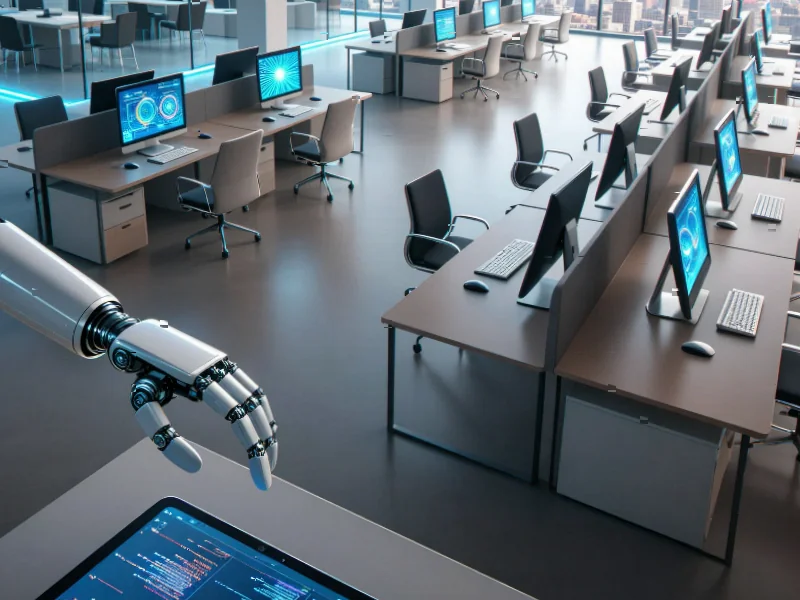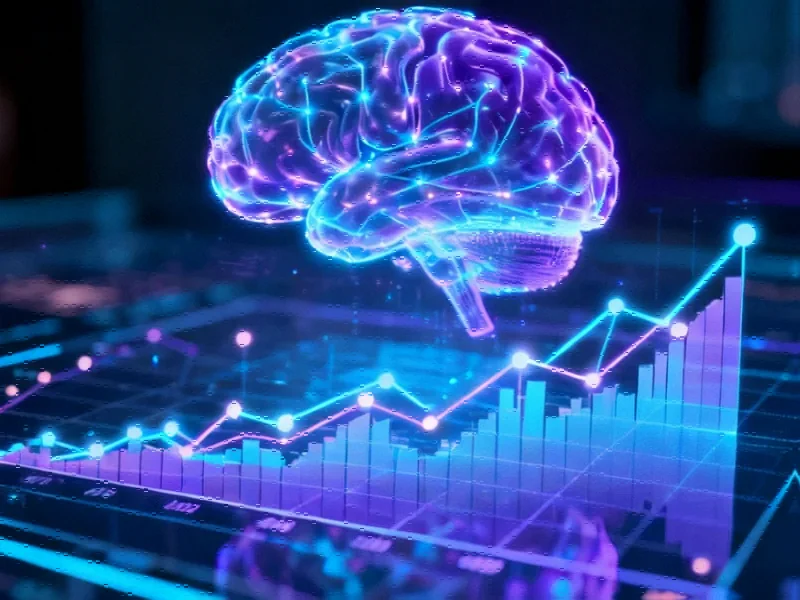Industry Insider Challenges AI Hype Cycle
Andrej Karpathy, former Tesla AI director and OpenAI cofounder, has delivered a sobering assessment of artificial intelligence’s current capabilities that’s sending ripples through the technology sector. In a candid interview with podcaster Dwarkesh Patel, Karpathy argued that despite massive investments and breathless headlines, today’s AI systems remain fundamentally limited and true artificial general intelligence remains at least a decade away.
Table of Contents
The “Slop” Problem in Modern AI
Karpathy didn’t mince words when describing the current state of AI implementation. “Overall, the models are not there,” he stated bluntly. “I feel like the industry is making too big of a jump and is trying to pretend like this is amazing, and it’s not. It’s slop.” This critique comes from someone who helped build some of the most advanced AI systems in existence, giving his perspective particular weight.
The term “slop” refers to the unreliable, often messy outputs that current AI systems produce despite their impressive surface-level capabilities. Karpathy suggests that many companies are overstating what their AI can actually accomplish, particularly when it comes to autonomous operation and complex reasoning tasks.
Reality Check on AI Timelines
While industry leaders like OpenAI CEO Sam Altman predict human-level AI by 2030 and Elon Musk forecasts AGI arriving within the next year or two, Karpathy positions himself as the voice of caution. He describes his own timeline as “five to ten times pessimistic” compared to mainstream predictions, yet insists that even a decade-long wait for AGI should be considered “very bullish.”
This perspective gap highlights the tension between commercial interests and technical reality in the rapidly expanding AI industry. As capital floods into AI startups and major tech companies race to deploy AI features, Karpathy’s warnings serve as a counterbalance to what some are calling an AI bubble.
The Agent Problem: Overpromising and Underdelivering
Karpathy reserved his strongest criticism for the recent explosion of AI “agents” – systems designed to autonomously perform tasks like writing code, searching the internet, and operating software. While acknowledging the concept’s potential, he detailed significant shortcomings in current implementations., according to recent innovations
“We’re at this intermediate stage,” Karpathy explained. “The models are amazing. They still need a lot of work.” He identified three critical limitations:, as as previously reported, according to market trends
- Insufficient reasoning ability for complex task execution
- Limited perception of software environments and contexts
- Unreliable tool usage that leads to unpredictable outcomes
These limitations create what Karpathy calls “brittle, unpredictable results” that could have serious consequences if deployed without proper safeguards. “If this isn’t done well,” he warned, “we might end up with mountains of slop accumulating across software, and an increase in vulnerabilities and security breaches.”, according to related coverage
Beyond Benchmarks: The Real Challenges Ahead
According to Karpathy, much of the disconnect between AI hype and reality stems from misleading metrics. Public demonstrations, benchmark competitions, and chatbot conversations often showcase narrow optimizations rather than addressing the field’s most difficult unsolved problems.
The true challenges facing AI development include:
- Long-horizon planning across multiple steps and timeframes
- Structured reasoning with logical consistency
- Safe system design that prevents harmful outcomes
- Reliable tool integration across diverse software environments
These fundamental capabilities remain largely unsolved, despite impressive performance on standardized tests and carefully curated demonstrations.
Industry Reaction and Implications
The tech community responded immediately to Karpathy’s assessment. Prithvir Jhaveri, CEO of prediction markets aggregator TradeFox, suggested the interview could potentially “pop the AI bubble” if anything could. Meanwhile, podcast host John Coogan noted that Karpathy’s comments arrived shortly after AI pioneer Richard Sutton declared large language models a “dead end,” creating what he described as “whiplash” in the tech community.
This growing chorus of caution from respected figures in the field suggests a potential reckoning for AI expectations as the technology matures beyond initial hype cycles. While nobody disputes AI’s transformative potential, Karpathy’s comments highlight the gap between current capabilities and the autonomous, reliable systems many companies promise.
The Path Forward: Difficult but Surmountable
Despite his criticisms, Karpathy remains optimistic about AI’s long-term trajectory. “I feel like the problems are surmountable,” he affirmed. “But they’re still difficult.” This balanced perspective acknowledges both the significant technical hurdles ahead and the field’s potential to overcome them with continued research, improved safety practices, and realistic expectations.
For businesses and developers working with AI, Karpathy’s assessment serves as both a warning and a roadmap. The message is clear: focus on reliability and substance over flashy demos, invest in solving fundamental problems rather than optimizing for benchmarks, and maintain realistic timelines for what AI can actually deliver.
As the AI industry grapples with these reality checks, Karpathy’s perspective may help steer development toward more sustainable, genuinely useful applications rather than chasing the hype cycle toward potential disappointment.
Related Articles You May Find Interesting
- Android XR Ecosystem Emerges with Strategic App Showcase Preceding Samsung Hardw
- Accenture’s Former CTO Joins Google Cloud to Drive AI and Public Sector Growth
- Major AWS Disruption Highlights Corporate America’s Cloud Dependency Crisis
- The AI Task Revolution: Redefining Business Processes from Goals, Not Steps
- OpenAI Cofounder’s Reality Check Sparks Debate Over AI Hype Cycle
References & Further Reading
This article draws from multiple authoritative sources. For more information, please consult:
- https://www.youtube.com/watch?v=lXUZvyajciY
- https://www.youtube.com/c/DwarkeshPatel
- https://x.com/Prithvir12/status/1980186299794411560
- https://x.com/johncoogan?lang=en
- https://www.youtube.com/watch?v=21EYKqUsPfg
- https://x.com/karpathy/status/1979644538185752935
- https://sherwood.news/tech/gi-artificial-general-intelligence-when-predictions/
- https://www.barrons.com/articles/nvidia-stock-ceo-ai-agents-8c20ddfb
This article aggregates information from publicly available sources. All trademarks and copyrights belong to their respective owners.
Note: Featured image is for illustrative purposes only and does not represent any specific product, service, or entity mentioned in this article.



